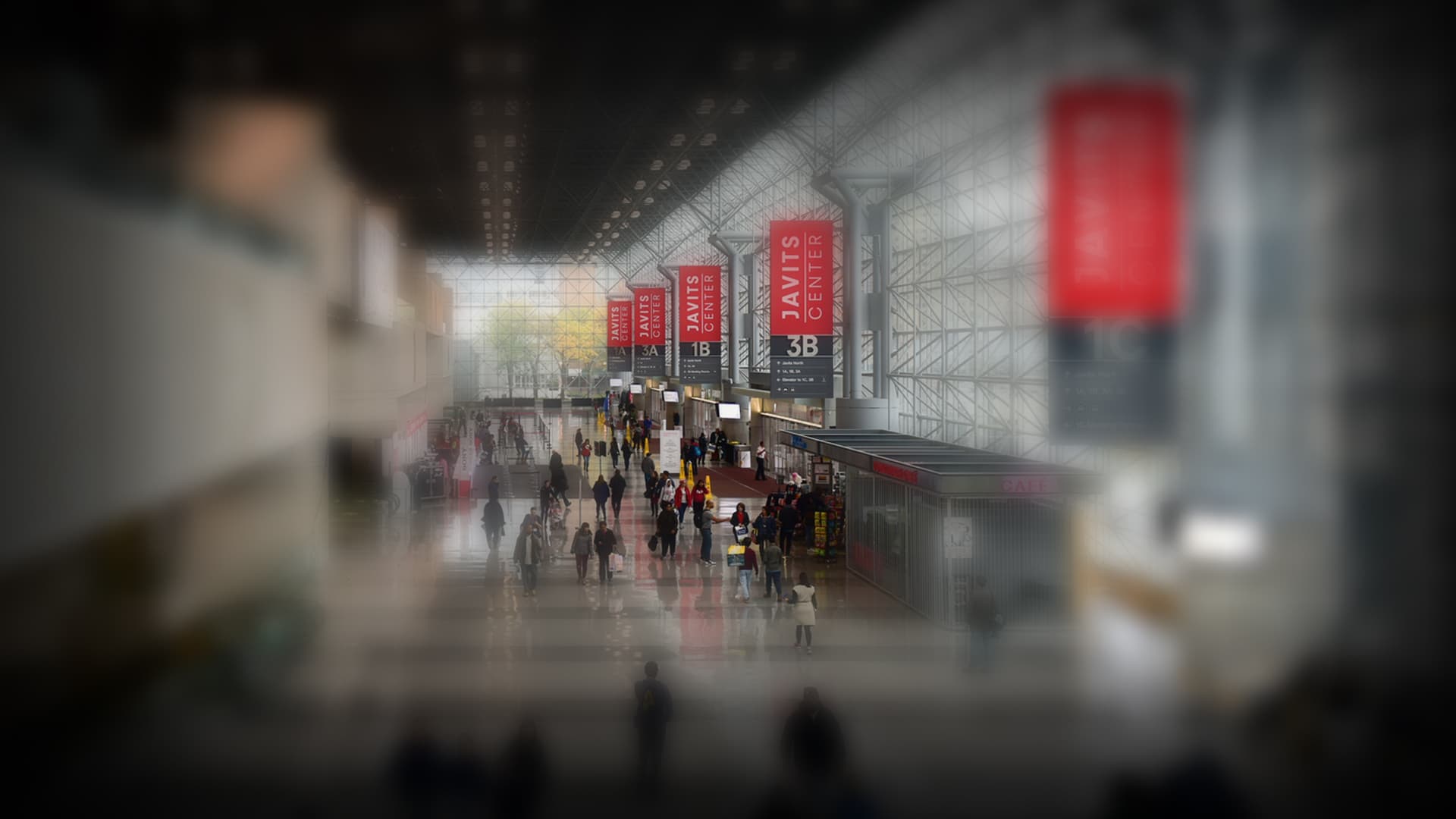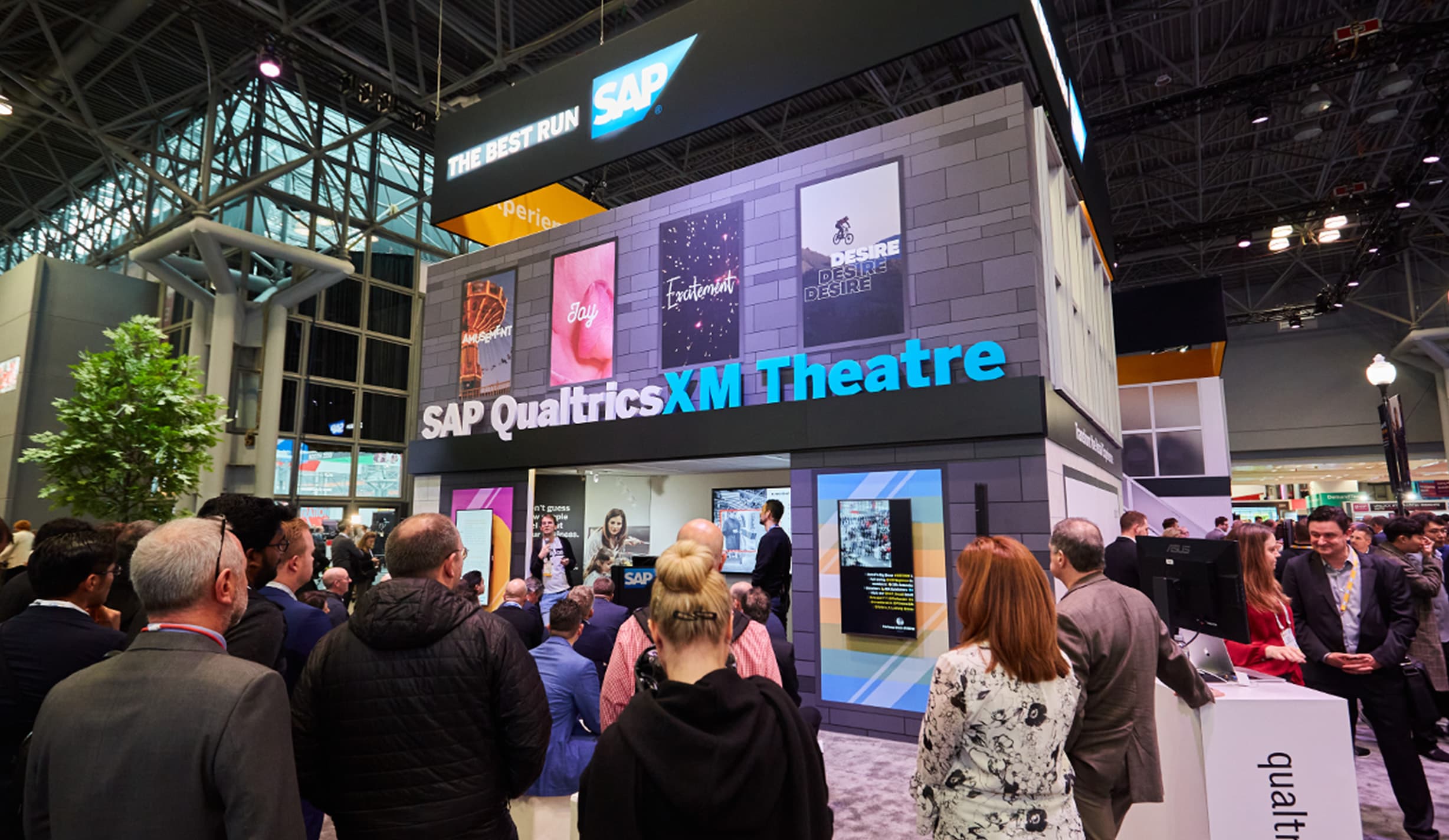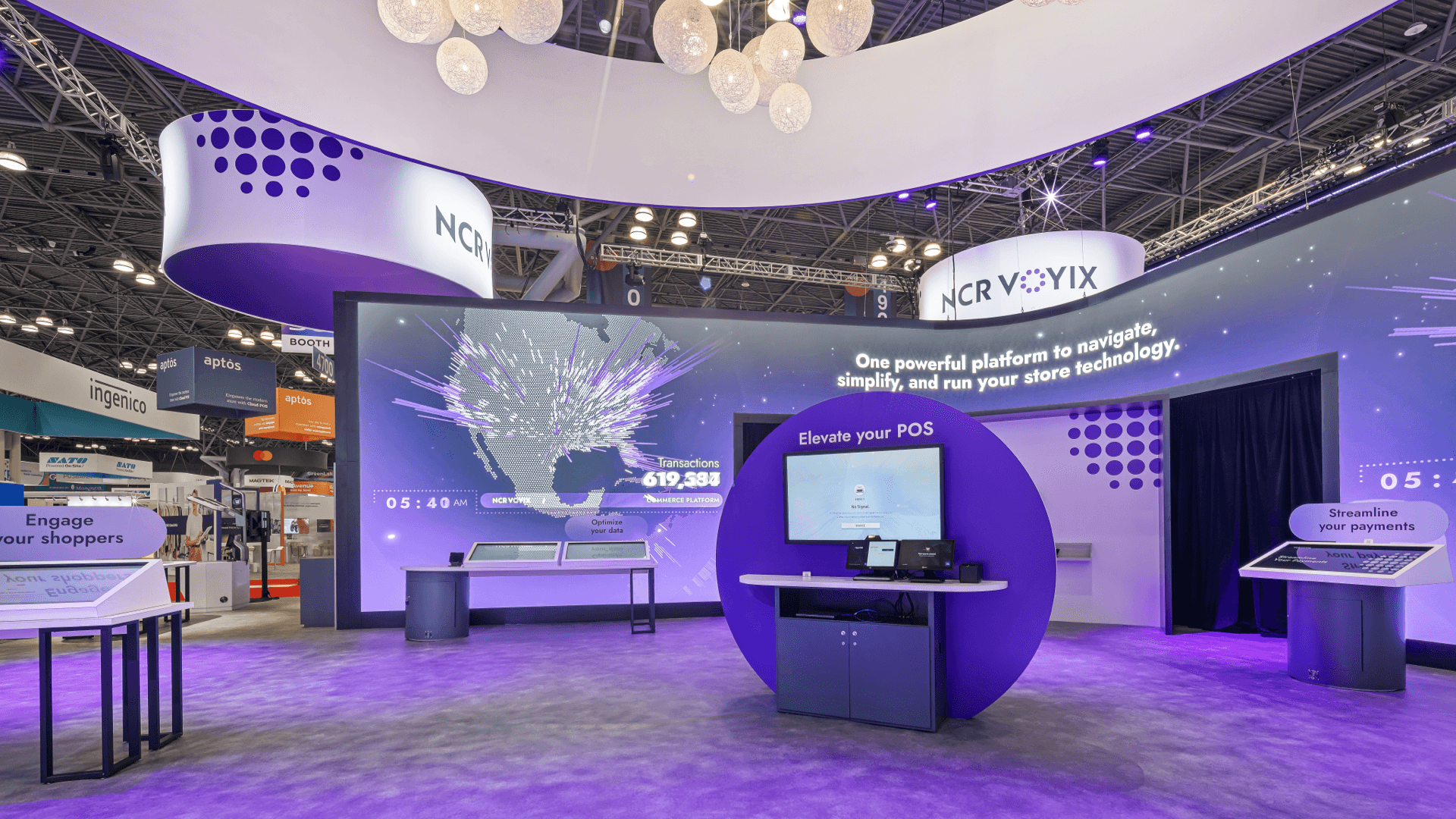Five Key Learnings for Marketers from NRF 2025
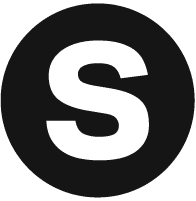
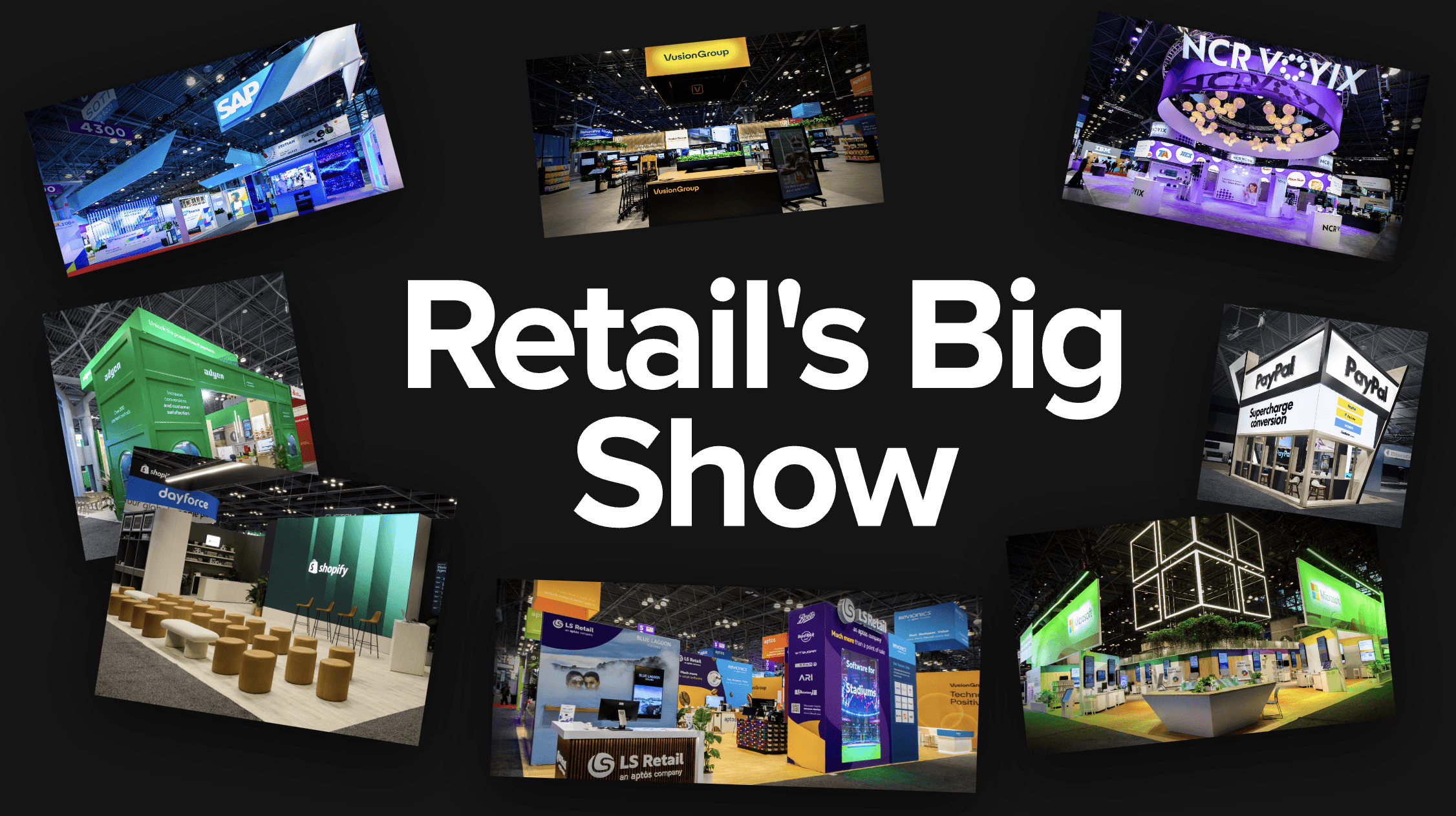
After the bright lights of Las Vegas and CES, marketers turned their attention to New York in mid-January for NRF, the annual trade show focused on all things retail. With so many of the world’s biggest technology, shopping, and logistics brands in attendance (as well as a massive number of startups and mid-sized players vying for attention), NRF truly sets the tone for the year to come in terms of design, engagement, and interactive trends.
With many of our senior creative and design leaders on the show floor delivering for our clients, here are 5 key takeaways from Retail’s Biggest Show, and what we expect to see more of in 2025.
#1: The Best Stories are Simple (even complicated ones)
Unsurprisingly, AI dominated the conversations and engagements at NRF. However, the hardest thing to get across is what your brand or product’s integration with AI means, and why your audience should care. The key lesson we learned at NRF: keep it as simple as possible. Don’t get bogged down in long, technical demonstrations: inject playfulness and clear messaging, and people will retain what you say, no matter its complexity.
The best example was IBM: watsonx's AI capabilities were showcased through live ping-pong matches between attendees, demonstrating how its technology is used in pro tennis and golf tournaments. The game featured a physical table and custom paddles embedded with motion-tracking sensors, broadcasting real-time gameplay data on an adjacent screen: simple, effective, and fun.
We also liked how Shopic demonstrated AI-powered shopping carts that enhance the in-store journey by improving navigation, streamlining checkout, and delivering personalized customer interactions. Best of all, the carts will never crash into your ankles (we hope).
As Sparks VP, Creative Masaru Haruyama pointed out,“An experience that is so simple you can focus on the content shows empathy for your audience: in such a cluttered and chaotic environment, make it simple, make it clear, and make it beautiful.”
#2: Sweat the Small Stuff: Why Authenticity Matters
Budget realities inform the design and build process, from the smallest pop-up space to the biggest custom booth. However, be smart about how you design, and how you deploy materiality by considering the POV of your audience. As VP, Creative Todd Worley noticed, “We’re seeing a move away from brands trying to plaster every available surface with messaging, which is a great move in such a cluttered environment.”
However, as brands evolve their material palette to include more natural/neutral elements (wood, stone, concrete, block pastel color), be smart with what goes where. Imitation materials are necessary for many reasons, especially across a large footprint, but if you have an interaction at eye level or a touchpoint your audience will engage with up close, try and use a high-quality laminate or veneer, or deliberately move away from a ‘faked’ material (shoutout to Workday and VusionGroup for doing this beautifully).
The same can be said for greenery, which is often utilized in helping push sustainability messaging. There’s no substitute for the real thing, and printing a green wall to lower costs defeats the purpose.
If you need to make budget cuts, consider the original design intent: it might be better to redesign from scratch than compromise on the messaging with the wrong material choice.
#3: New Year, New Look
Speaking of authenticity, NRF showcased several major brands subtly shifting the way they show up at large events. SalesForce/Agentforce evolved their look ‘off the forest floor’, with their iconic natural elements (think shrubbery, grasses, and topographical form factors) dialed down in favor of a cleaner, more minimalist look and feel, and it worked: the space was alive with activity all day, every day.
Meanwhile, over at SAP, the brand was moving in the other direction, showcasing a bolder, fresher look with vibrant colors and materiality choices: a modern aesthetic that remains welcoming, intuitive, and most of all informative. VP, Creative Stephen Kellogg paid particular attention to the SAP brand ambassadors: “The use of elevated materials and even pops of glitter on the staff outfits work to humanize the experience by making people the face of the brand. SAP was showcasing a large and very complex enterprise and product offering, and while much was out and on display, SAP’s brand ambassadors were the active and fun gateways into one-on-one conversations with experts.”
No matter which way your brand shows up in 2025, the power of people to drive engagement should remain a crucial pie wedge when splitting out your budget.
#4: Cut Through the Clutter (as best as you can)
NRF is one of the busier (dare we say crowded) trade shows out there: a huge amount of players in a relatively small space, at least compared to the soaring halls and open spaces of convention spaces in Orlando and Las Vegas. This means the audience encounters your brand exhibition quickly, and without the benefit of wide open walkways and long viewing angles that help visually define your space, and aid in brand recognition. So, how can you stand out?
Firstly, think about how you show up from a distance. Amongst all the overhead clutter, clever design can help you stand out: some of the best players doing this were Google, which featured rainbow-colored banners that could be spotted from afar, and Verifone, which included a UFO-like installation hovering overhead, drawing attention and creating a memorable visual impact. Overhead LED banners can also help in a big way, and with LED becoming more and more affordable, expect to see more motion way up there in 2025 and beyond.
Secondly, make sure you have a singular, clear message at the center of your offering, and use it to create a clean hierarchy of messaging across your space. The audience won’t be able to take multiple messages in at once if they are engaging your brand at point-blank range - they may not even clock your brand. Microsoft did a great job of this: a gorgeous 3D light sculpture of the iconic logo on the corner of the booth was immediately recognizable, and the use of simple touch screens to tell the story made the space easy to understand and navigate.
#5: Remix the Classics
Lastly, think about how you can elevate the classic elements of a trade show to maximize engagement. Offering coffee has long been a go-to honeypot, but VP, Creative Mick Brennan particularly liked how Shopify elevated this simple concept, to great effect.
“I thought Shopify found a dynamic way to freshen the approach within their space, turning hospitality into a living case study. The brand featured a coffee-centric customer (Loveless Coffee) via a pop-up within the footprint; the result was an up-leveled F&B experience for guests that showcased the ways Shopify can support and advance your business with a real-world example at its heart.” As we tell our clients: the best way to tell your story is to have your customers tell it on your behalf.
Other remixed elements we liked? Mini-theatres were back in a big way (again, Shopify did this brilliantly, as did Oracle), as were gamified elements (we particularly liked the OptiSigns "OptiClaw" Cash Grab Machine, where attendees could score branded items while learning about their Lift and Learn technology). As we said in point one: make your storytelling playful and relatable if you want the message to resonate and stick.
By incorporating these insights and examples from the NRF 2025 tradeshow floor, brand marketers can create more innovative, engaging, and effective marketing strategies that resonate with modern consumers and stay ahead of industry trends. As the retail landscape continues to evolve, these lessons from NRF 2025 provide a roadmap for marketers across all verticals to navigate the future of brand engagement and consumer connection.
